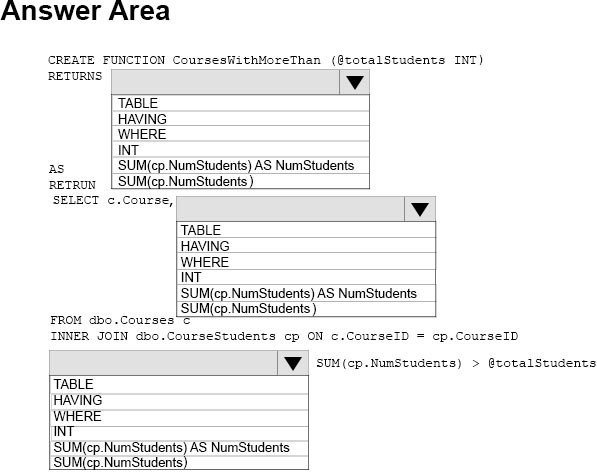

HOTSPOT -
You need to develop a function that returns a list of courses grouped by the total number of students in a course.
The function must list only courses that have more than a specific number of students. The specific number of students is defined as an input variable for the function.
How should you complete the function? To answer, select the appropriate Transact-SQL segments in the answer area.
NOTE: Each correct selection is worth one point.
Hot Area:

Dieter
Highly Voted 5 years, 10 months agoAnette
Highly Voted 5 years agoBillybob0604
Most Recent 4 years, 5 months agoVermonster
4 years, 5 months agoSimSql
4 years, 6 months agoSimSql
4 years, 6 months agoSimSql
4 years, 6 months agoSimSql
4 years, 6 months agoAndy7622
4 years, 6 months agoHA2020
4 years, 7 months agoTheDUdeu
4 years, 9 months agostm22
4 years, 11 months agojonasdv
4 years, 8 months agoloceweh520
5 years, 3 months agoAndybug
5 years, 4 months agofabzo
5 years, 7 months agofabzo
5 years, 7 months agoprakash101179
5 years, 9 months ago